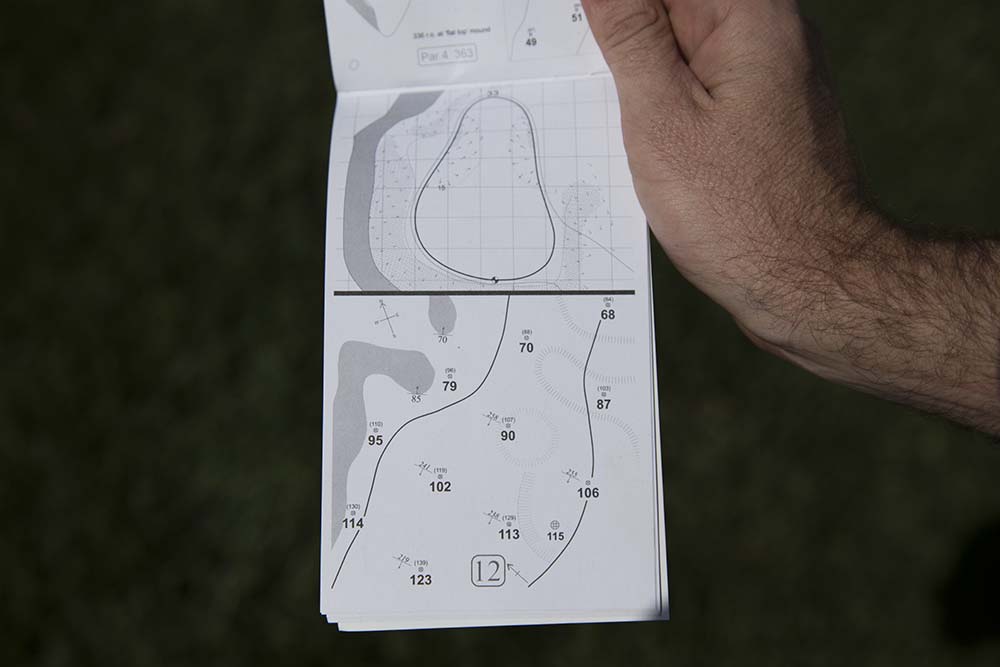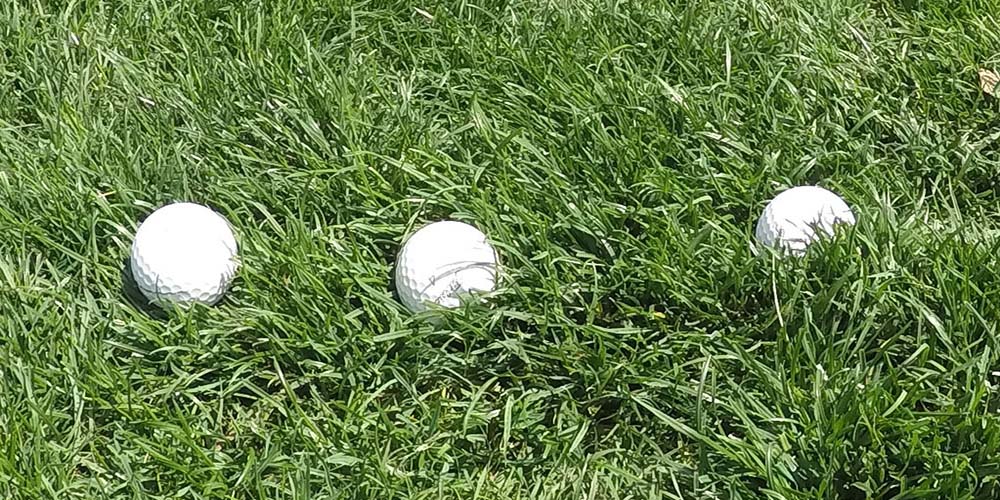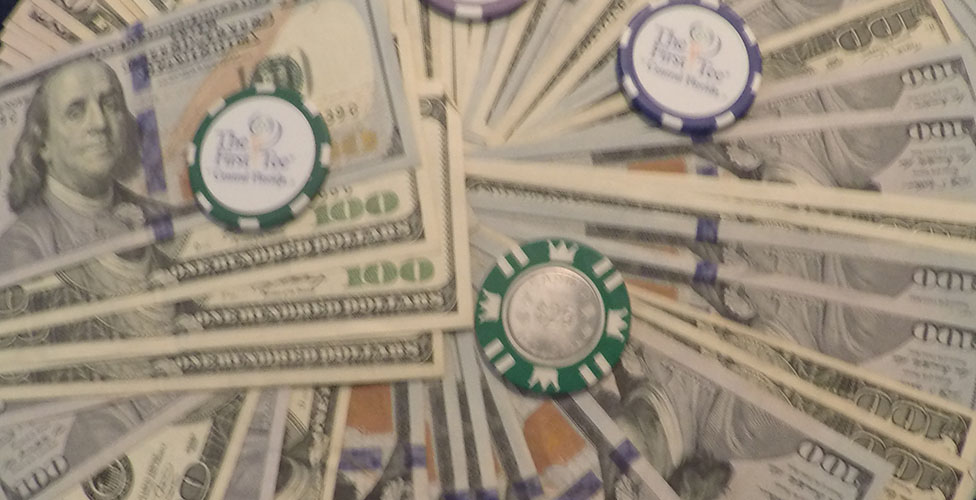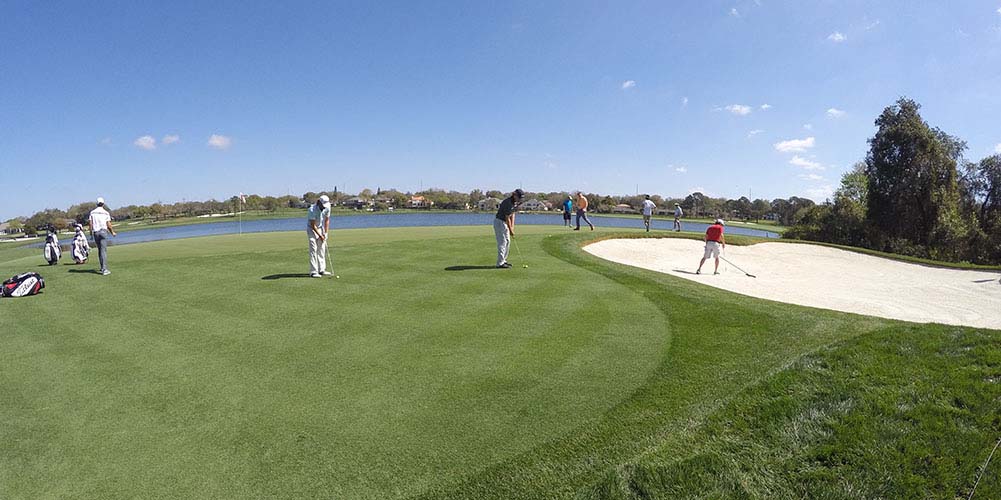Preparation is Key
Preparing properly for an important round of golf is one of the most under-appreciated things that professional golfers do. It is also largely overlooked by many amateur golfers. Planning begins days before a competitive round for professional golfers. While amateurs probably don't have time to go through all the rigors of preparing as a professional would, there are some relatively easy things you can do. Preparation for playing a particular golf course begins with your practice round.
Practice rounds are not for working on your technique. Practice rounds should be used to discover how to play your game on that course. You probably won't find some magic cure-all for your game the day before a tournament. You can learn a whole lot of beneficial information about a particular golf course in one day though. Below are some keys to remember when playing your next important practice round.
Check the Weather Forecast
Almost everyone checks the weather forecast before they play a round of golf. A huge key to developing a good strategy in practice rounds is to check the weather forecast for the tournament day as well. If the weather conditions and wind direction are roughly the same, your practice round should be a fairly good indicator of how the course is going to play during the tournament. But weather conditions can change pretty quickly. A hole that is downwind one day can be into the wind the next and require a totally different strategy. New obstacles will be in play and every hole will be very different than it was the day before. If you are paying attention to the weather forecast, you can anticipate these changes and be much more prepared for them. Playing in any condition besides 80 degrees and sunny can have its challenges.
Look for the Landing Zones
Very few fairways are the same width from start to finish. Most have a wide spot in them. A fairway may only be 10 or 15 yards wide in some places and it may be 50 yards wide in others. When you are playing a practice round, identify the wide areas and figure out which club it will take to get you there and how your strategy will adapt if the weather changes.

Most fairways tend to get more narrow because of obstacles like fairway bunkers. It's always easier to avoid these obstacles by avoiding their distance rather than their direction. If a particular fairway bunker looks very difficult to get out of, avoid it by taking a club that has no chance of reaching it or that you are sure will carry over it. The important takeaway from this part of your practice round is to decide where you want to end up off the tee during the tournament.
Hit Shots from the Rough
Everyone knows how to hit a shot out of the fairway. After all, every driving range in the world has short grass or mats to practice off of. But no driving range can prepare you for how shots will react from the rough on a given golf course. While it is important to hit fairways, we all end up in the rough from time to time. One of the worst mistakes you can make in a practice round is to not prepare for this inevitability. The variations in the way shots react coming out of the rough is exponentially greater than from the fairway.

Drop a ball in the rough whenever you can and hit a shot to see how it reacts. Sometimes the rough is short and hardly affects your club at all and other times it completely stops your club because the grass is so thick. Also, be sure to give yourself different lies (ie, ball sitting on top of the grass, all the way at the bottom, etc.). No matter how you are playing in your tournament round you will be glad you practiced all these different shots. Practicing these shots will make your decision making process much more effective and give you the ability to manage your game far better.
Note: As a general rule of thumb, play to the front-edge yardage when playing out of the rough. This will help keep the ball in front of you and avoid going over the green where up and downs are much more challenging.
Chip More than you Putt
You can learn so many things by chipping around the greens. Short game shots change a lot with different types and lengths of grass. More than learning how the ball will react out of different lies and how it will bounce on the green, chipping has the added benefit of allowing you to watch the ball roll on the greens. You will immediately understand the lay of the land and where the easy spots are to get up and down from. Sometimes missing the green on the correct side is better than having a double breaking 50 foot putt. These things are often more difficult to see if you're simply standing on the green. This added knowledge and practice will also aid your decision making and strategy.
Hit Long Putts
Practice rounds are not the place to work on your putting stroke. They are the place to work on your feel. If you have time, drop a couple of golf balls on the middle of the green and putt towards the corners. Notice the speed and the break of these putts. This will give you good feel for the way each green is designed. You will have a better idea of how to attack each pin and know when to play it safe. Do not waste your time hitting a bunch of six foot putts to wherever the current pin location is. The pin is not going to be there tomorrow and you will learn very little about the rest of the green.
Always Hit Bunker Shots
One of the biggest things that changes from course to course is the sand. The sand changes in consistency, amount, moisture, and depth to name a few. Each of these variations require a slightly different approach and the best place to figure out what approach works best is in your practice round. Experiment with different clubs and varying your clubface position at address. After a few shots you will have a pretty good idea of how those particular bunkers react.
Look for Pin Locations
The pin will not be in the location that it is during your practice round. That's the one thing you know for sure. So why on earth would you hit a bunch of chips or putts to the exact location where the pin will not be during the tournament? A better strategy is to figure out where the potential pin locations could be and hit chips and putts toward them to develop a plan of attack.
Many times, tournament officials will mark the pin location with a dot of paint. This obviously takes the guesswork out of things. Stick a tee in the ground on that dot of paint practice chipping and putting towards it. Obviously it is impossible to spend enough time to practice every variation to every pin. One or two shots in that direction will give you 80% of what you need to know. If you don't have time for that, simply picture where the pins could possibly be and develop a general game plan for attacking each one. Be thinking about the best angle of attack from the fairway, identifying where the friendly spots are around the green, etc.
If you can't find the dot of paint or they haven't marked the course yet, look to the corners of the green to find potential pin locations (back right, back left, front right, front left). Pretend you are the one setting the pins for the tournament. Where would you put the pin? Odds are the person setting the pins will see the same things you see. Identify which pins you want to avoid taking on and which ones you will attack.
Make a Bet

It doesn't matter if you are playing somebody for one dollar or a hundred dollars, some level of competition is always advised during a practice round. It is important to recreate tournament conditions as best you can. If you are competing against somebody, there will always be a few shots that are very important and force you to buckle down. This helps you recreate tournament conditions. Standing over a putt that matters is the same in a tournament as it is anywhere else. Practice for the big moment by putting something on the line. As the saying goes, "practice like it's a tournament, play a tournament like it's practice". You can't really know how your body is going to react to pressure until you put it under pressure. Put yourself in these situations in practice rounds and you will be much more comfortable in those moments when tournament time is upon you.
Summary
Use your practice round to prepare you to play on that particular golf course. Do not use your practice round to work on your technical flaws. When the tournament is close, accepting your game for the state that it is in will help you get the most out of it. Any attempt to get technical immediately before a tournament will probably yield negative results. Instead, pay attention to the unique challenges that golf course provides and develop a strategy for conquering it with your game. Things will rarely go exactly to plan. However, if you are armed with the knowledge you gained in an effective practice round you will maximize your chances for success.
